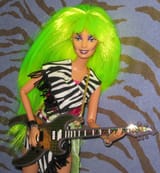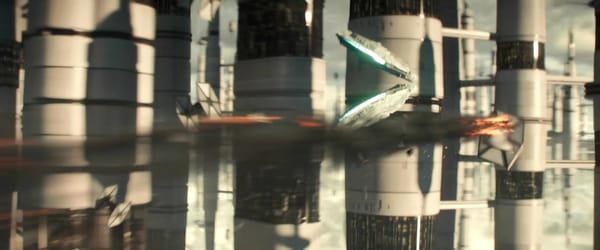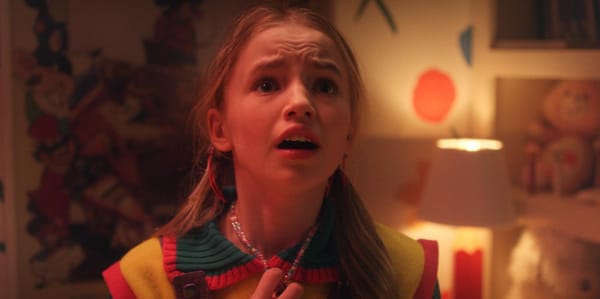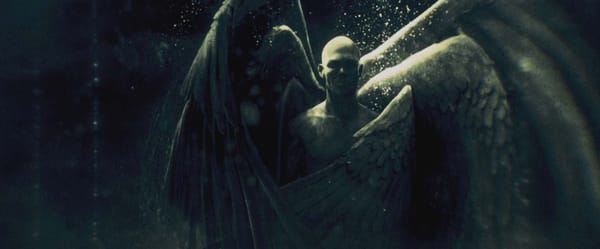The Andor Special Edition Special Edition: Rogue One / Star Wars
Happy Star Wars Day, to those who observe
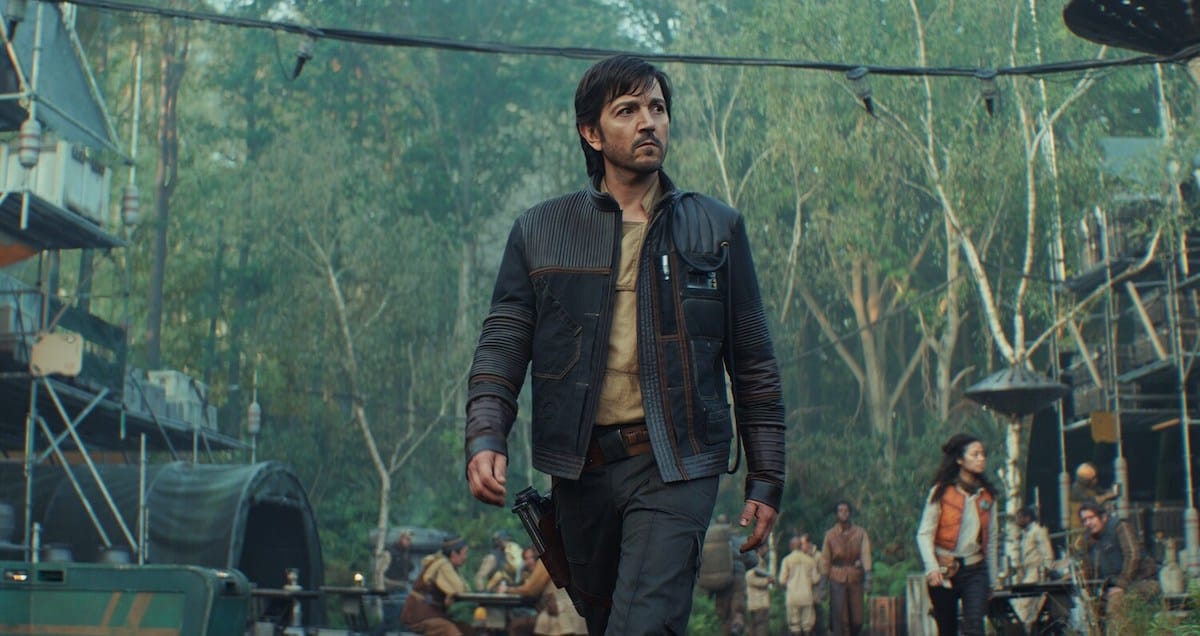
I’m out of town this week regretting my choices, so in lieu of Friday’s regular newsletter, please enjoy this (inevitable?) epilogue to my Andor series, in which I try to make sense of all this. I’ve made it free to all readers. You’ll have to become a paying member to access the rest — but at only five dollars a year, you can’t argue with the value.
4K77
There’s a fan-driven reconstruction of the original cut of Star Wars now, which surpasses all the prior efforts (to no shame of those efforts). The project is called 4K77, and it is — to the best degree possible — a 4K digital restoration of an actual film print of Star Wars. (Yes, there is also a 4K80 and a 4K83.) Previous, laudable efforts — most notably, Harmy’s “Despecialized” editions of the original trilogy — were composites of best-available sources, cunningly edited and re-timed to effectively recontstruct a version of the original Star Wars from altered, digital versions that were created far after the original landmark.
Not this one. This one is done the way the Criterion Collection would do it — the way the Criterion Collection should do it, actually; who, honestly, is harmed if Criterion does a 4K remaster of the original Star Wars trilogy exclusively for physical media? It would earn everyone involved a fortune, and be a mitzvah for cultural preservation as well — an original print, lovingly restored to the best of the abilities of the people doing the restoration. Notably, 4K77 is nowhere near perfect. It looks like a film, in ways that have fallen out of favour in even the best professional restorations; and given that original Star Wars screening prints are in various stages of “total fucking mess” nowadays, I bet it was a hell of a lot of work to get it this far. Suffice to say, I unabashedly love it; and like a lot of such efforts, it also touches me deeply. That people have taken their time and their passion to do this work — in the absence of any professional responsibility to maintain such a vital piece of American pop art — well, it ain’t gonna end fascism, but it’s a touching act of resistance, nevertheless.
The other day The Watch podcast described Lucasfilm’s Star Wars project under Disney as being primarily (I’m paraphrasing here) the maintenance of a legacy brand whose main value is selling merchandise. This, of course, was said in the context of how gobsmackingly odd it is that Andor exists at all; the series (or even the idea of doing an “adult”-skewing Star Wars entertainment) lines up with exactly none of the pillars of the company’s strategic plan. (As they said on the podcast) Andor is better for Disney, perhaps, than Lucasfilm proper; there was word recently that the second season of Andor drove three hundred million dollars’ worth of Disney+ subscriptions, which effectively pays for the show. But for Lucasfilm as a niche within Disney, Andor makes little sense as anything other than a Kathy Kennedy passion project and/or (Andor!) an early-days tire-kicking to see how flexible the brand actually is, during the streaming war Gold Rush. Andor will be the de facto benchmark of “the best Star Wars,” probably, for the rest of my life (supplanting Empire as the prior example), but it feels uncommonly like a dead end for a “legacy brand” whose primary strategic interest is in making sure you don’t leave one of the parks without a Grogu backpack and a lightsabre. Hell, it explains Grogu himself: the Muppet Baby version of a beloved legacy character — but one who (and this is important) doesn’t talk, isn’t really a character, and can’t make choices, surprising or otherwise.
Nostalgia, it seems, can go in a lot of different directions; some of them (to me) fruitful, others creative poison. How does a fan restoration of an edit of Star Wars that has been “officially” off-limits for almost 30 years differ from a production studio whose solipsistic navel-gazing has become a closed loop in the twenty years since George Lucas signed the brand over (in premise, if not in deed) to others? I don’t know. Maybe it doesn’t.
Maybe I just have my particular kind of nostalgia for Star Wars, and it’s (by the corporation’s lights, anyway) a weird one: when I say I want Star Wars that makes me feel like a kid again, I mean it two ways:
- I want the actual Star Wars I had when I was a kid, just like it was when I was a kid; not a re-tread, re-make, re-edit, or pale re-envisioning of; and
- I want the thrill of new storytelling in the Star Wars mode, which opens, rather than closes, the imagined possibilities for that world — because this, too, is what I associate with Star Wars, and always have.
Both of these impulses feel renegade. One has been rebellious since at least 1997; the other, only became so in the last couple of years.
May the Force of Others be with you
I rewatched Rogue One after Andor was over; and then I went straight into the 4K77 restoration of Star Wars, because honestly, who wouldn’t? Here’s the top line: the experience of Andor simultaneously improves and substantially weakens Rogue One.
Rogue One was already a compromised movie (of course). This isn’t under-discussed; we know all about it (without knowing pretty much anything specific at all). The production went bad. The first cut was some kind of a disaster. Tony Gilroy was brought in to “save it.” He “saved it,” though (or was part of a team effort at saving it) at least in part by bringing in more fan-baiting “legacy” elements, like the Darth Vader scenes and the C-3PO scene and so forth. All of this nets out to a movie that is both tonally at odds with itself, and (in spite of Gilroy’s better efforts at braiding in a bit of character depth into early sequences with Cassian, Jyn, and Bodhi) a spectacular failure at setting up the humans within its story world as characters we’d like to follow. It has a ripping final battle, though.
What’s weird is that — in spite of its tortured production and a flawed final product — Rogue One has become so beloved among the Star Wars fandom that you’d actually think it was good. (Well, to be fair: it is “good.” It’s just hamstrung by its own inadequacies far too many times to ever reach “great.”) Watching Andor has been a great process of mentally retrofitting the sense-memory of Rogue One over the past three years, tricking ourselves into believing that the two works were somehow of a piece. Encountering the original article after the end of “Jedha, Kyber, Erso” slams the gears straight back to where they were all along. It is fascinating that a movie as shambolic as Rogue One begat Star Wars‘ true latter masterpiece.
The stuff that Andor proportionally “improves” in Rogue One fall into two categories, both predictable. Firstly: yes, Cassian as a character feels much more substantial and central in this reading of the story; he becomes a true co-lead with Jyn, driving the narrative and making consistent and revealing decisions that mate nicely with his (now) well-established character.
Second: specific lines throughout the film gain significant additional colour, up to and including Cassian’s awkward “welcome home” to Jyn as they prepare to set off on the renegade mission to Scarif. (This now rhymes, to my surprise, with Cass’ beautiful “coming home to yourself” scene with Niya in the first episode of Andor‘s second season.) There are dozens of such moments, which feel different now that Andor has created a meta-cloud of nuance around them, most of which you can probably guess ahead of time.
But, and it’s a big “but,” the biggest net effect of all of the above is that Andor takes the passability of Jyn Erso’s part of Rogue One — already shaky as hell, poorly motivated, and entirely ungrounded in character as a driver for plot, as discussed above — and basically obliterates it. Jyn was always a disappointingly vague point-of-view character for Rogue One; she desperately needs an “I want” song that she never gets. Played against the lockstep rigour of Andor, though, it’s now impossible to watch Jyn flit from scene to scene and not be resoundingly aware that basically nothing she is doing makes sense, and that she’s effectively chasing a ball willy-nilly around the soccer field, regardless of who kicks it. (First, she wants to find her father. But also, she hates her father. But then, she finds out she loves her father. But then, she finds out her father did something important for the Rebellion, but also, she doesn’t care about the Rebellion. But also, she finds her father and he loved her, but then he died, so maybe she should care about the Rebellion? But the rebels don’t want to listen to her! But her father wanted her to do a thing, so she should just go do it right? But, then, maybe, then, but, maybe, but…)
Like I said: this shit didn’t work in 2016 and it’s much worse now, which is disappointing, but I guess could have been kind of predictable going into the project. Cassian, as a character, was only a symptom of Rogue One‘s preexisting problems; fleshing him out doesn’t solve them. And all of the movie’s tonal wonkiness comes across far louder now that it has something more in line with what we, as an audience, all think Rogue One is like, to play as a counter-example.
Another weird and interesting thing: I’m fine with what I called (in last week’s newsletter) the unwillingness to accept uncertainty and doubt; by which I mean, I don’t need every little detail of character decisionmaking explained to me. But it’s kind of funny, after Andor, to watch so many characters — up to and including Luke Skywalker! — jump head-first into the Rebellion at a moment’s notice, after the torturous path it takes our beloved Andor heroes to get there. As the Empire podcast pointed out last week, this is actually kind of natural — Rogue, Star Wars, and the rest of the trilogy take place in the war’s endgame, and everything at that point is (comparatively) easier. The Rebellion is already in headlong motion; the Empire’s already at the “taking cyanide pills in the bunker” stage of decay. But I was amazed, on this rewatch, how often I found myself thinking “wait, why does [X character] care about the cause?” Han Solo’s initial resistance to the resistance was, in this light, pretty refreshing. A real one, to the end.
The Power of the Force
There’s something else that happens when you watch Andor, Rogue One and Star Wars back to back (to back), and that’s one of the best things that has happened to me in any viewing of Star Wars, ever: when Jedi Master Obi-Wan Kenobi finally turns up and starts doing Jedi Master things, you go holy shit, what is that?!?
We first meet Ben at about the half-hour mark of Star Wars, which means (if you’re making a loose “trilogy” out of Andor‘s final trio + its two follow-up films), you’re about 75% of the way through your watch when the narrative suddenly shifts gears dramatically, and you’re in a world with superpeople, destinies, magic, and glowing swords. I like this. “Like seeing a velociraptor,” to quote myself quoting Leslye Headland a couple of weeks ago.
I don’t know that I understood how fatally over-saturated with Jedi the Star Wars franchise had become until I watched this season of Andor. Andor doesn’t just serve as a counter-text to Jedi-focused adventures (by positing that the “royal family,” as Gilroy puts it, is neither the only story in the Galaxy, nor the only story of merit; that having Force powers does not confer greatness upon a character). Andor is also a superb palette-cleanser, a hard reset of taste. For 23.5 glorious episodes (I’ll except half the episode with the Force healer), the Jedi and their double jumps are nowhere in evidence… and this makes the Galaxy feel bigger, and realer, and thus — this is the neat part — more susceptible to the awe-inspiring power of magic, when it does arrive. It’s as though we’re watching Tom Cromwell working his legal trickery around the marriage of Henry VIII to Anne Boleyn in an average episode of Wolf Hall; and then all of a sudden, Nicol Williamson’s Merlin from Excalibur shows up with his mirror-chrome skull and starts conjuring a new reality out of the ancient secrets hidden beneath the bog. You’d think this would be tonally destructive, but no. It — like so much of the best of Star Wars — feels additive. It makes the whole story seem bigger, wilder, more deeply layered with history and possibility and ancient, beautiful meaning.
It does, of course, make me never want to see a Jedi again.
To my mind, tales of the Jedi should be awe-inspiringly rare. Already Dave Filoni is reading this (because Dave Filoni is definitely reading this) thinking to himself “well I can get around that because my characters aren’t technically Jedi.” No Dave: those characters too. (One shudders to think which Jedi they’ve already shoehorned into the Mandalorian & Grogu movie next summer.) The Yoda meme has nerfed what all Star Wars fans should actually see as a worrying, critical point of disruption: something crucial to the conception of this universe was shattered in spin-off after spin-off after spin-off, given that all of those spin-offs have been saddled with Jedi characters by the dictates of maintaining the legacy brand. Evidently, in the Filoniverse, it isn’t considered Star Wars unless there’s a Jedi. Dave, I couldn’t disagree more.
It occurs to me that at some point, one of the creatives at Lucasfilm will get their hands on some of the beautiful loose threads left dangling at the end of Andor (the smart money is on them fast-tracking a Kleya story, immediately). New writers will start adapting Gilroy’s characters to suit their purposes. When this happens — because it isn’t Star Wars unless there’s a Jedi — the Jedi will start getting embroidered into this largely mysticism-free story. Kassa Caleen, the child of a “messenger” and a partly Force-sensitive mechanic, will (of course) attend Rey’s Jedi Academy in the sequel trilogy’s sequel trilogy. Or something. When it happens, this work will have the dual effect of reclaiming those characters for the actual strategy of Lucasfilm proper (legacy brand to sell merch; nothing sells like a lightsabre), and reasserting the creative hegemony of what Star Wars stories are supposed to be like, lest anyone think they can be like anything else. Which, of course, sucks: because we had this whole great thing, these past three years, because at least one person realized that Star Wars stories could be so much more than they were being allowed to be.
And/or (Andor!) the miscellany
- The Watch runs off lessons learned from Andor. An overall insightful state-of-the-nation of the television industry as it stands right now, Andor notwithstanding.
- How much de-aging do you reckon they used on Diego in the second season? It only really sticks out in the last couple of episodes; but I’ve seen the interviews, and those crow’s feet are deep.
- While I was all in on my Andor thinking, I did a video about the Andor ships and characters I want to see in action figure form. Pronto!
- My current headcanon: Nemik’s manifesto was the last thing Luthen sent over the network, before he destroyed the wires.
The beginning
My Star Wars has always been a series of circles closing themselves. (Skip the Vader quote.) From the original trilogy through the Dark Times to the beginning of the next iteration (literally called “The Beginning” in the first draft of the script), jumping to a moment long before everything we knew, only to arrive back at (nearly) the moment we left. Closing the book. Buying the lightsabre. (Selling the lightsabre.) The unexpected revival with Disney — the “I just don’t think I’m gonna care” of it all, uncanny and prescient (if ten years too early). The energy of liftoff, the heights of The Last Jedi, the fall into disorder and entropy. And in the middle of it all, the most un-looked for of prequels to prequels, delivering us back to (just before) the beginning.
Someone last week said, of Andor, “this is the end of the story.” (It might have been Sophie Petzal again.) As mentioned: the Rebellion is headed to victory. “Party” Partagaz is shooting himself in the head, down in the spy room. We know Cassian is getting in that U-Wing to (eventually) go off and die; but we also know, as regards every moral and personal objective that has been set up in this series, he’s already succeeded. He leaves a child behind; my best-case scenario for that baby is that we never see them again, never even learn their name (“Kassa Caleen” is my own invention; Tony Gilroy hasn’t even weighed in on their sex, let alone their name). I prefer to close the book here, with all the gratitude in my heart.
The story is done. For now. Always, always “for now.” I’ll see you on the next loop back to the beginning.
